Iran’s First-Ever ‘Hypersonic’ Missile Comes With a Catch
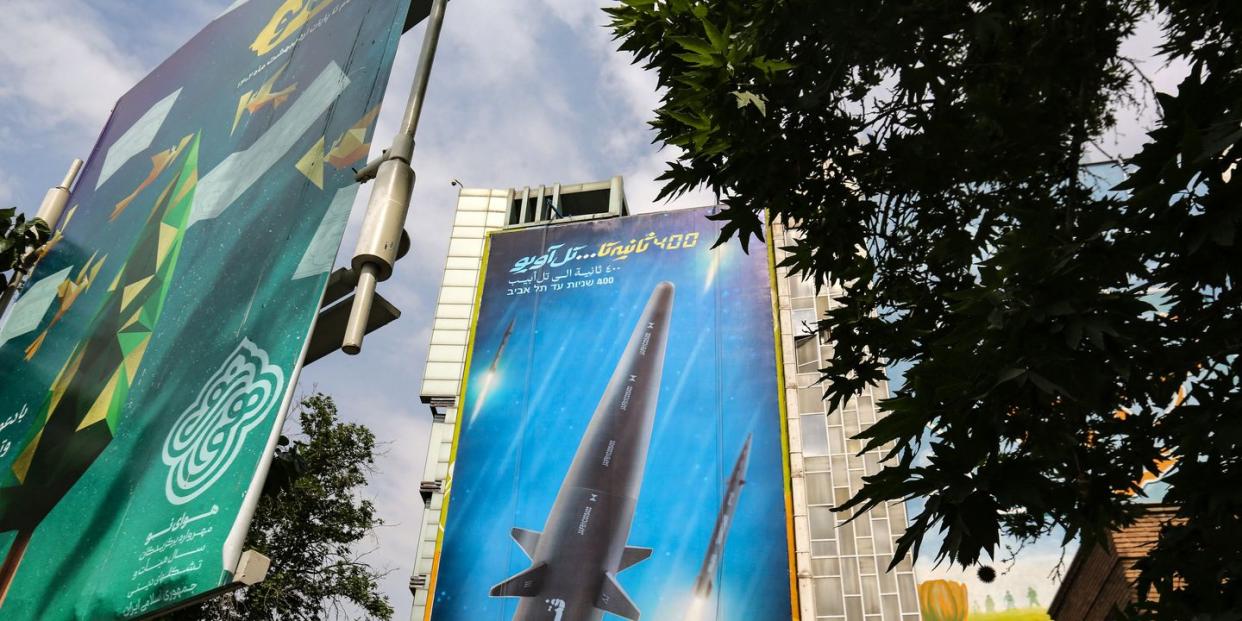
On June 6, Iranian President Ebrahim Raisi, commander of the Iranian Revolutionary Guard Corps (IRGC), Brig. Gen. Amir Ali Hajizadeh, and Supreme Leader Sayyid Ali Khamenei attended a ceremony to unveil a new “Fattah” medium-range ballistic missile that can allegedly strike targets up to 870 miles away—far enough to hit targets in Israel from Western Iran.
The spiky, black missile is billed, somewhat misleadingly (see below), as Iran’s first hypersonic missile, allegedly boasting a peak velocity of 13–15 times the speed of sound, or around three miles per second. As if to eliminate any doubts as to the weapon’s purpose, a multi-story billboard set up in downtown Tehran boasts that the new weapon will be able to strike Israel within “400 seconds” (6–7 minutes) from launch.
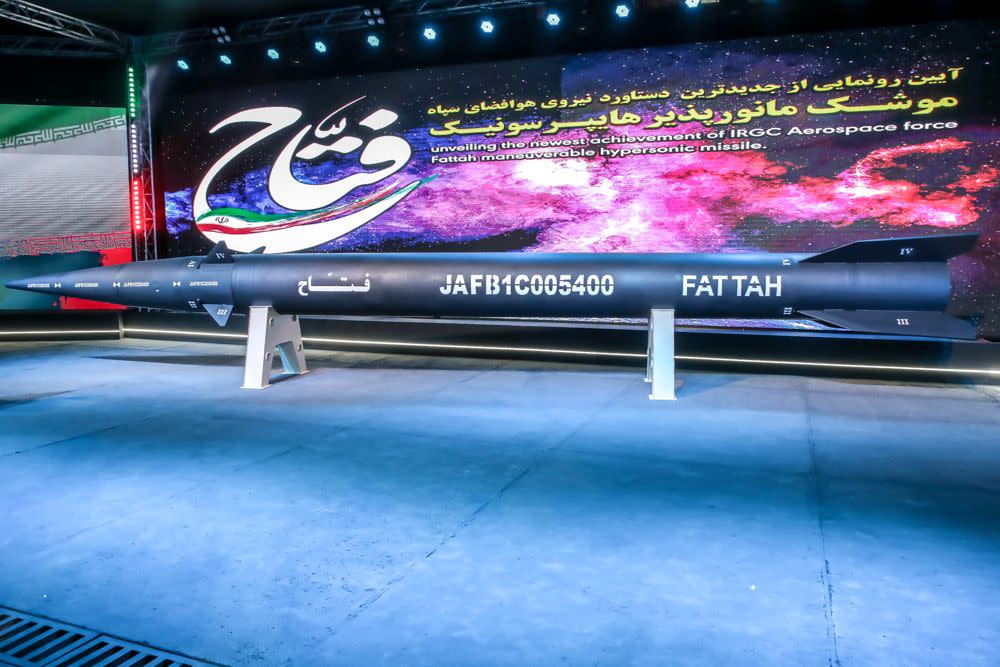
Hajizadeh first announced that a hypersonic weapon was under development last November during an event commemorating the accidental (per Iran’s government, though some Western sources say it was an Israeli hit) death of an influential Iranian rocket scientist. Its name, “Fattah”—which means “victor” or “opener”—was supposedly chosen by President Raisi himself, and shouldn’t be confused with multiple Iranian weapons named “Fateh,” or “conqueror,” such as the shorter-range Fateh-313 missile.
Fattah reportedly uses a solid-fuel rocket which, unlike a liquid-fuel rocket, means it can be pre-loaded and kept on standby for launch at short notice. It also means that the missile is potentially more mobile, as it doesn’t need to be gassed up prior to launch, which could aid in survivability. Photos show that the missile has two sets of four maneuvering fins, and uses a spherical rocket booster similar to the Arash-24 that Iran’s satellite launch vehicle uses.
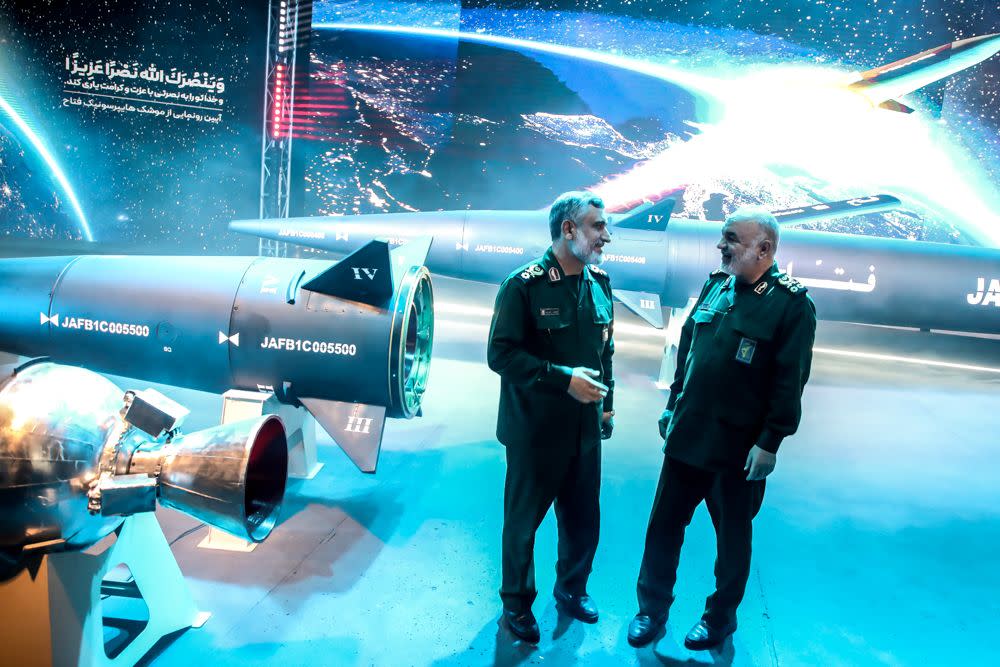
Tehran’s propagandists have long emphasized panache for music videos about missiles, and the unveiling of Fattah was no exception.
Here's the video of the presentation displayed at the unveilling of the Fattah hypersonic missile today. Much of it is computer animation, aside from a few parts at the beginning. pic.twitter.com/ArH4QwuPjZ
— Jason Brodsky (@JasonMBrodsky) June 6, 2023
The video showcased some launch footage recorded both from the ground and from a downward-looking camera on the missile’s fuselage. It also includes footage of a ground test of the Fattah’s second stage thrust-vectoring engine nozzle, which can pivot to allow the missile’s maneuverable reentry vehicle (MARV) to, well, maneuver.
However, most of the video was comprised of computer animation, showing the missile’s conical MARV separating from the rocket, using thrust vectoring to weave evasively so as to avoid air-defense fire, and ultimately plunging down to a nondescript point target in the desert below.
Is It Actually Hypersonic?
Hajizadeh claimed in his speech that this weapon “cannot be destroyed by any other missile due to how it moves in different directions and at different altitudes.”
It’s always appropriate to take Iran’s technological claims with more than a few grains of salt, as the country has—on multiple occasions—built mockups of stealth fighters and straight-facedly presented them to the public as actual flying aircraft, complete with Photoshopped images of the “fighters” in flight.
That said, Iran has made verifiable progress in developing a variety of ballistic missiles that are some combination of faster, longer-range, and more precise than their predecessors. These new missiles have been used for attacks on ISIS and Israeli, Kurdish, and U.S. forces, alongside some predecessors like the Emad, Ghadr-110, and Khorammshar and Qasem Soleimani MRBMs—which already equal or exceed Fattah in sheer range, but have their own comparative downsides.

Iran’s missile force—controlled by the IRGC praetorian guard/expeditionary force—thus play an important strategic role in the country’s use of conventional military power. They also implicitly underpin Iran’s ability to employ any nuclear weapons it might eventually develop.
That’s of particular concern to Israel—Iran’s self-appointed nemesis. Ashtiani mentioned the Fattah’s capacity to “utilize various warheads for different missions”—almost certainly an oblique reference to a dual-role conventional/nuclear capability, despite Iran’s claims that the weapons-grade plutonium it’s been refining to higher and higher standards is not intended for weaponization.
Now that Iran is boasting that Fattah is a hypersonic missile, it’s jumping on a fashionable weapons-development bandwagon kickstarted by Russia and China.
Unfortunately, the “hypersonic” term is often used deceptively to imply more advanced technology than what is actually present. By definition, hypersonic describes a missile/aircraft traveling at or over five times the speed of sound, or a mile per second. That’s certainly fast, but ballistic missiles have been rocket-boosting themselves up to hypersonic speeds since the 1950s and 60s.
However, the modern usage of “hypersonic weapons” refers to weapons that can sustain and maneuver at hypersonic speeds. One method of achieving this is to have a ballistic missile launch what’s called a hypersonic glide vehicle into the exosphere—a vehicle that’s then able to skip-glide just over the atmosphere, repeatedly bouncing off the dense air molecules below. The other method is to develop a cruise missile with an air-breathing ramjet motor that can sustain hypersonic speeds while within the atmosphere.
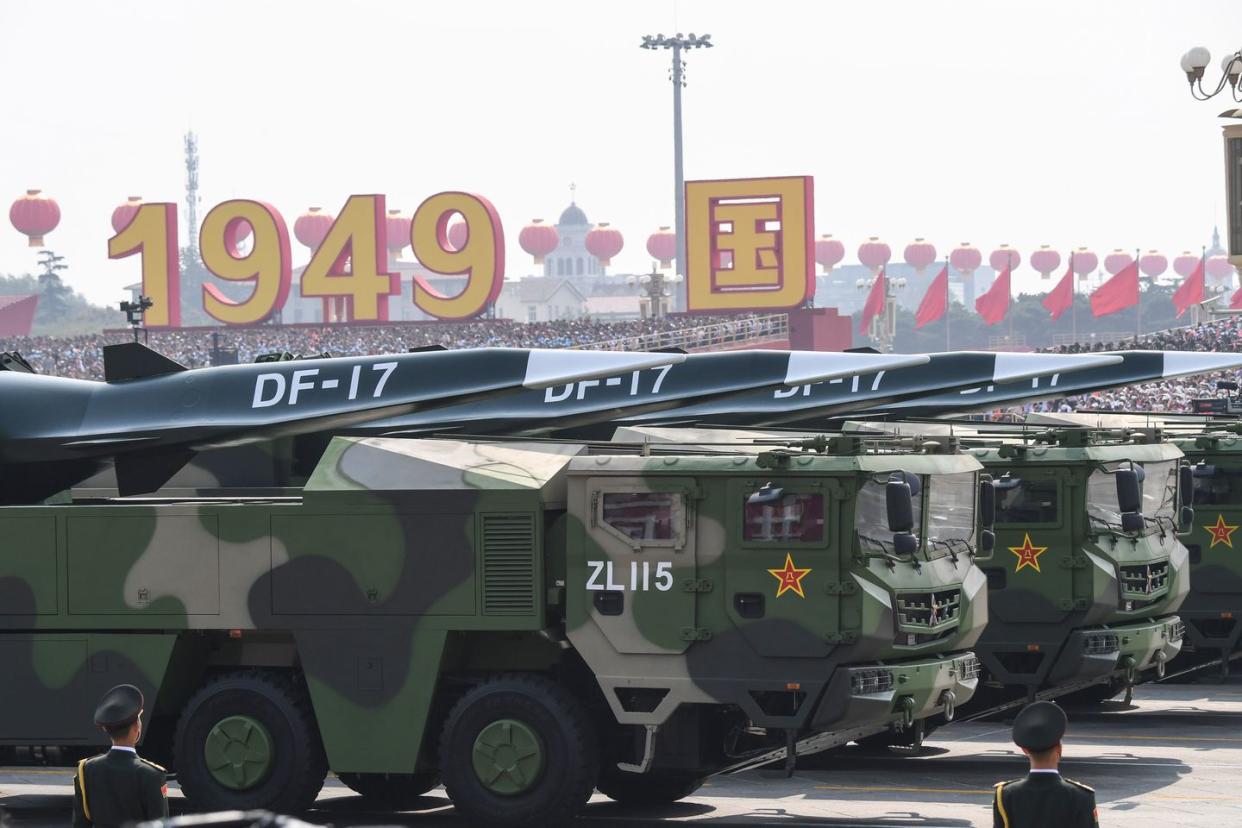
The big deal with these weapons is not their maximum speed. Rather, the appeal comes from their sustainable speed, flatter—and thus stealthier—trajectory, and ability to maneuver and avoid entering the optimal engagement radius of air defenses. Those all significantly complicate hitting them with interceptor missiles.
However, Russia has capitalized on hypersonic hype by describing its Iskander and Kinzhal ballistic missiles as hypersonic weapons. Sure, that’s true in a strictly definitional sense—ground-launched Iskanders can attain Mach 6, and the air-launched Kinzhal can allegedly achieve speeds up to Mach 10 or higher. And, to be fair, the reentry vehicles of these two related weapons possess limited maneuverability that they can use to improve precision, and potentially dodge air-defense fire—an advancement over earlier ballistic missiles.
However, they do not qualify as glided vehicles, as they cannot sustain anywhere near their peak velocity and are not as maneuverable.
The new Fattah missile appears to be more of an Iskander-style weapon—a ballistic missile with a partially maneuverable reentry vehicle—rather than a hypersonic glide vehicle weapon.
Israeli media has also speculated that Fattah could be modified for air launch—much as Russia air launches the Kinzhal missile from MiG-31 jets—from the two dozen Su-35S twin-engine fighters that Iran is apparently negotiating to buy from Russia. In theory, a carrying fighter could effectively give the missile a big altitude and speed boost, allowing it to travel faster, further, and from vectors that would be impossible using a ground-based system.
Is Fattah Unstoppable?
Iranian officials have claimed that the new Fattah missile can’t be stopped by existing air defenses, and even suggest that it could be used to target and destroy such missile defenses to “kick in the door” for subsequent volleys of less advanced missiles.
“Unstoppable” certainly isn’t a literally truth, even if this weapon would pose significant challenges for interception. Recall that Russia’s Kinzhal “hypersonic” missiles were also billed as unstoppable. When Russia began lobbing those missiles at Ukraine in 2022, that reputation seem deserved, as Ukraine’s 1980s-era Soviet air defenses were incapable of stopping Kinzhals, despite otherwise shooting down a majority of incoming Russian cruise and ballistic missiles.
But that all changed dramatically this spring, when Ukraine deployed its first U.S.-built Patriot batteries with PAC-2 and PAC-3 missiles in the Kyiv region. In short order, these systems—using 21st-century missiles with built-in radar seekers designed for low-tier missile defense—began shooting down Kinzhal after Kinzhal, which were actually attempting to strike the Patriot system itself.

That should not provide confidence that Fattah by itself is guaranteed to penetrate Israeli defenses. And boasts from Iranian officials that Israel’s Iron Dome defense system will be ineffective against Fattah missiles aren’t actually that impressive, as Iron Dome is designed to shoot down crude unguided rockets, not ballistic missiles.
In truth, Iron Dome is a lower-level layer of Israel’s multi-layer air defenses. Those also include Patriot batteries and several equivalent, or even more potent, air-defense systems—notably, the David’s Sling (which is replacing the Patriot), naval Barak-8 missile, and Arrow 2 and hit-to-kill Arrow 3 missile interceptors.
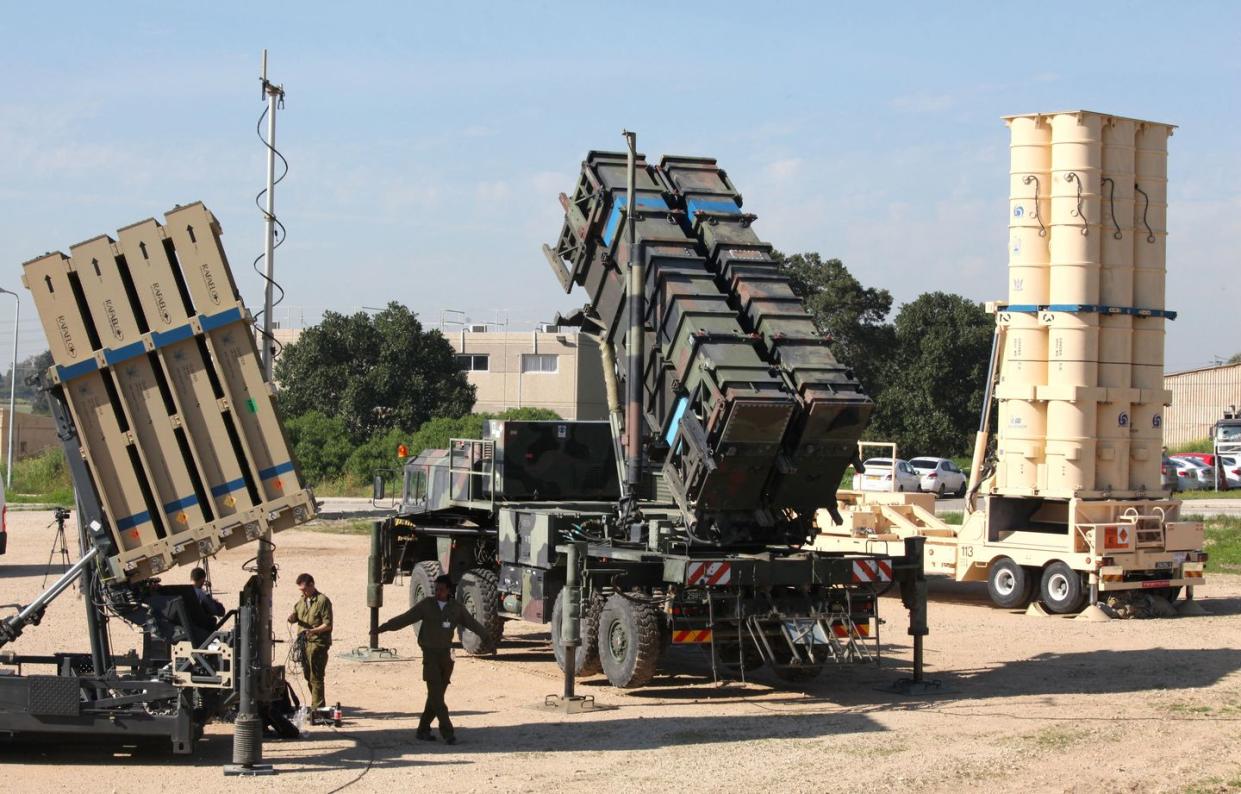
Furthermore, since 2017, Israel has been developing an Arrow 4 missile defense system, which is explicitly billed as optimized to defeat advanced hypersonic weapons and missiles that release multiple warheads.
Iranian defense minister Gen. Mohammad Rez Ashtiani also claimed that the Fattah has a reduced radar cross-section (RCS). While even modest RCS reduction can theoretically help delay radar detection time, high-arching ballistic missiles tend to be pretty visible to ground-based radars overall.
Launching a ballistic missile also creates a big launch flash, detectable on the infrared sensors of orbiting early warning satellites. This means that Israeli defenses would be aware of an incoming Fattah attack, regardless of when the incoming missile becomes visible on radar.
Fattah’s usefulness for conventional strike missions will also depend on the accuracy of its guidance system, which has not been addressed in detail yet in Iran’s statements.
Nonetheless, Fattah appears to herald an upgraded regional-level missile threat from Iran that will require better regionally integrated air defenses to manage than before. Recall that U.S. forces in Iraq were not protected by any Patriot or THAADS air defenses to shoot down the more pedestrian Iranian ballistic missiles that struck two U.S. bases in January of 2020, though they did receive enough early warning to seek cover in shelters and prevent deaths from the attack. That warning time could be cut much shorter in the future if Fattah is as fast as Iran boasts.
You Might Also Like
